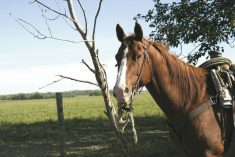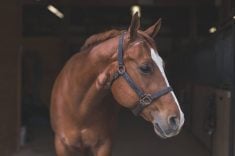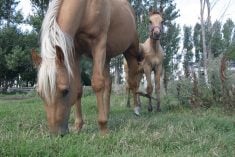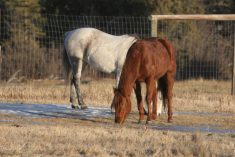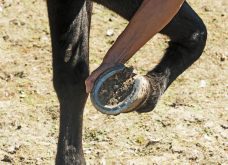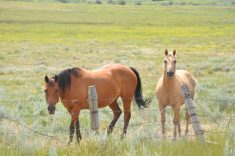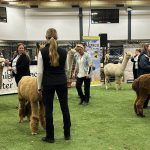In the world of performance horses, hindquarter dysfunction often presents as a frustrating mystery. Chronic lameness, poor engagement, sacroiliac pain and poor performance — many horses suffer from these issues without a clear cause, but what if the root cause has been overlooked entirely?
Recent findings suggest that pelvic collapse, caused by incomplete fusion of the pelvic symphysis, is a widespread yet largely undiagnosed condition, especially in young thoroughbreds, and likely prevalent in other sport horses. The pelvis undergoes critical development in the horse’s formative years, including the closure of growth plates. If this process is disrupted, the long-term consequences for pelvic stability can be severe and irreversible.
Unlike other joints, the pelvic symphysis is a cartilage-based structure that gradually ossifies into bone as the horse matures. Research on growth plate closure, including Dr. Deb Bennett’s work, indicates that full fusion doesn’t occur until around five years for mares and six years for colts. This highlights a fragile period before ossification, when excessive training or demands on the young horse can interfere with the ossification process, leading to mechanical failure and permanent instability of the pelvic frame.
Read Also
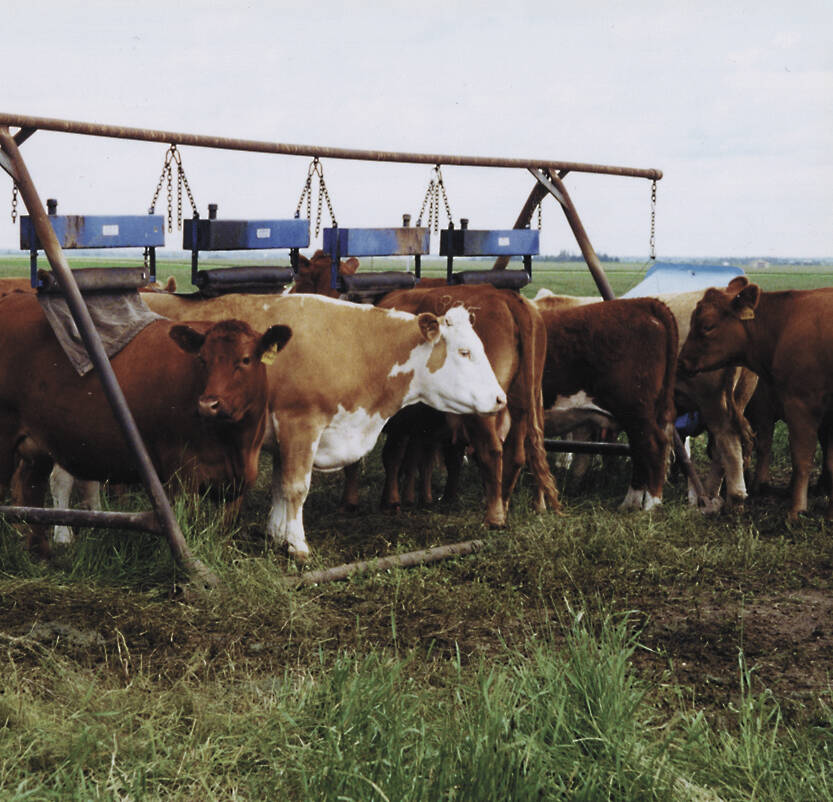
Shifting standards on cattle parasite control
Parasite product resistance has more farmers and veterinarians thinking differently about how to control issues like lice or worms.
Becks Nairn, a taxidermist and postmortem enthusiast in New Zealand, has identified a common pathology in racehorses retired due to lameness, unsoundness and poor performance. Her findings demonstrate that while the dorsal (top) portion of the pelvic symphysis fuses, the ventral (bottom) portion often remains open, resulting in a structurally compromised and unstable pelvis. Without complete ossification, the pelvis can’t maintain its shape, causing the tuber sacrale to collapse inwards leading to instability in the sacroiliac joint. The tuber sacrale are bony prominences on the top of the pelvis alongside the spine, and their connection to the sacrum is essential for stabilizing the sacroiliac joint and supporting the back.
High-impact or repetitive forces on an immature equine pelvis symphysis can cause structural failure. In the racing industry, the forces generated when a young horse launches from a stationary position at the starting gate, combined with an immature pelvis, can create shearing forces at the pelvic symphysis. Repeated trauma to an immature equine pelvis caused by high-impact activities such as racing starts, jumping, sliding stops, intensive futurity training in reining or cutting or pulling carts — can interfere with proper ossification, increasing the risk of mechanical failure and permanent pelvic instability.
Pelvic collapse leads to sacroiliac and hindquarter instability, creating a ripple effect throughout the entire musculoskeletal system, with outcomes varying for each individual. Emerging research suggests that the sacroiliac (SI) joint, traditionally considered a weight-bearing structure, may primarily serve a neurological role — specifically, proprioception. The SI joint helps the brain maintain spatial awareness of the pelvis and hindquarters, much like a gyroscope in aviation. When its critical feedback is compromised the musculature of the hindquarters cannot function in a co-ordinated way, leading to instabilities in the hip, stifle, hock and lower limbs. The SI joint then experiences abnormal stress, resulting in chronic pain and compensatory lameness.
While the sacroiliac (SI) joint serves as a stable neurological hub for the horse’s hindquarters, the pelvis acts as an anchor for the muscular attachments that drive hind limb movement. When unstable, it disrupts the smooth, co-ordinated transfer of power. Pelvic collapse strains the lumbar spine and fascial connections, leading to back pain and difficulty in developing a strong, even topline. One of the most telling signs of pelvic collapse is Hunter’s Bump — an exaggerated prominence of the tuber sacrale — indicating severe disruption of the pelvic framework.
The biggest challenge with this condition is that it often goes undiagnosed. Veterinary treatments typically focus on managing secondary issues — such as sacroiliac injections, chiropractic adjustments and joint therapies — without addressing the root cause: pelvic instability. While ongoing care can help manage discomfort and compensatory patterns, the loss of pelvic structural integrity is irreversible.
The sport horse industries are driven by pressures that prioritize early training and competition. However, the consequences of premature workload upon the immature horse can be profound. By rethinking how we approach early development and allowing young horses to mature naturally, we can significantly reduce the incidence of unsound horses — young and old.
Horses are especially vulnerable to developmental failures until they reach full physical maturity and strength around five to six years of age. Mares should be shielded from intensive work before the age of five, while colts should be allowed at least six years for full pelvic ossification. This period is crucial for ensuring the pelvis has the stability required for lifelong athletic performance
Becks Nairn’s work is illuminating these critical injuries, giving a voice to the horse’s story — often tragically revealed only after their death. If we are willing to listen, it brings to light serious welfare concerns regarding the early training of young horses. Placing a young horse under undue strain during their vulnerable developmental years significantly increases the risk of unsoundness — by a considerable margin. Once recognized, the solution is clear and highly effective, benefiting both horse welfare and the equestrian community.




